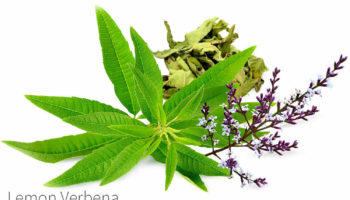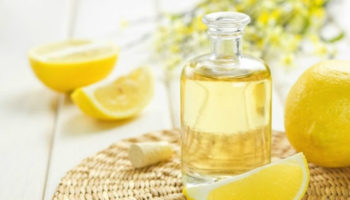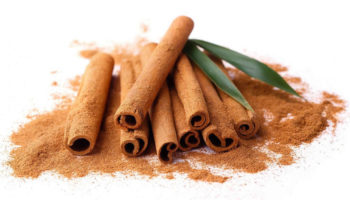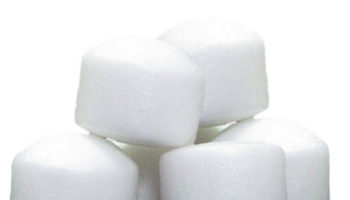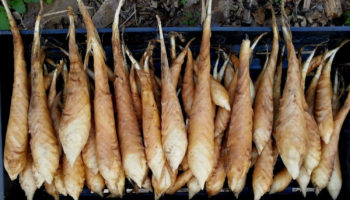What is dandelion tea
Dandelion (Taraxacum officinale) is a large genus of flowering plants in the family Asteraceae. The common name dandelion (from French dent-de-lion, meaning “lion’s tooth”) is given to members of the genus Asteraceae. Like other members of the Asteraceae family, they have very small flowers collected together into a composite flower head. Each single flower in a head is called a floret. Bees and other pollinating insects love dandelions. The flower heads consist of tube-like florets, each containing nectar and pollen. Dandelion is commonly regarded as a regular garden weed, but it has long been used in traditional Chinese medicine for ailments ranging from digestive disorders to complex disorders such as uterine, breast and lung tumors 1. Traditional Middle Eastern remedies require dandelions for spleen and liver ailments, while Native Americans have harnessed their properties to cure indigestion, heartburn, and kidney disease 1, 2. Dandelion plants were used by East Indians in the 16 century as a hepatic stimulant, diuretic, for liver disorders, and most interestingly, for chronic skin diseases 3. These roots are a source of triterpenes and steroids 4. Hata et al. 5 found that upon screening a variety of compounds from wild plants, Dandelion (Taraxacum officinale) was an effective inducer of differentiation in mouse melanoma cells. Furthermore, this group found that one constituent of Chinese dandelion, Lupeol-a triterpene, up-regulated melanogenesis and decreased cell proliferation in mouse melanoma 5. This triterpene is regarded as cytostatic and not cytotoxic. In another study, skin tumours were promoted in vivo in mice through a two-stage chemical carcinogenesis and treated with water and methanol extracts of Taraxacum japonicum. This showed inhibition of tumor initiation and promotion at both carcinogenesis stages, and it was concluded that Taraxacum, and more specifically taraxasterol (a triterpenoid), is a worthy chemopreventative agent 6.
Figure 1. Dandelion

What is dandelion tea good for
Dandelion extracts have been used for centuries for traditional Chinese medicine and native American medicine to treat cancers, hepatitis, and digestive diseases 7, 8. In Taiwan as well as mainland China, Dandelion is commonly known as herbal tea, is a popular folk drink with a number of functional ingredients and traditionally used by herbalists and doctors for the treatment of boils, sores, inflammation of the eye, urethral infection, lung and breast abscesses, acute appendicitis and jaundice 9. A whole plant extract of Dandelion has been found to have antibacterial, antifungal, antileptospiral, and antiviral effects, all of which have been reported by previously studies 9, 10, 11.
Components of Dandelion root extract include sesquiterpenes (derivatives of germacranolide, eudesmanolide, and guaianolide), different triterpenes like taraxasterol—their hydroxy derivatives and their acetates—phenolics compounds (such as chicoric acid, vanillic acid, p-hydroxyphenylacetic acid, p-hydroxybenzoic acid, syringic acid, caffeic acid, chlorogenic acid, and ferulic acid), and coumarins (scopoletin, esculetin, and umbelliferone) 12. Dandelion extracts are shown to have anti-inflammatory, antioxidant, and anticarcinogenic activities; however, there has been little scientific advancement made in this field with regard to the effect of dandelion root extract on cancer. Scientists are yet to determine the effect of each of the individual components (such as the family of triterpene alcohols and phenolic acids—found in the Dandelion roots—and cinnamic acids, flavinoids and coumarins—that are found in the leaves) 13 but they believe that the compounds in dandelion root extract most likely work in synergy with each other to produce the anti-inflammatory, antioxidant, and anticarcinogenic effect.
Jeon et al. 14 have shown that ethanolic dandelion extracts antioxidant activity by reducing levels of reactive oxygen species (ROS) and nitric oxide production (NO) and inhibit COX-2 expression, thus making dandelion extracts not only anti-carcinogenic, but anti-inflammatory, antiangiogenic and also antinociceptive. Dandelion flower extracts were tested on RAW264.7 cells (mouse macrophages) and exhibited inhibition of nitric oxide production in these noncancerous cells. The inhibition of reactive nitrogen species (RNS) as well as reactive oxygen species (ROS) by dandelion flower extracts was attributed to its phenolic components 15. Sigstedt et al. tested aqueous dandelion flower extract, dandelion leaf extract and dandelion root extract, on a variant MCF-7 breast cancer cell line (MCF-7/AZ) and LNCaP prostate cancer line. While dandelion leaf extract inhibited cell proliferation in MCF-7/AZ, dandelion flower extract and dandelion root extract did not. However, dandelion root extract and dandelion leaf extract blocked invasion of MCF-7/AZ and LNCaP cells (into collagen type I), respectively. Inhibition of cell invasion was corroborated by reduced matrix metalloproteinase activity of MMP-2 and -9, as well as reduced phosphorylation levels of src and FAK 16. Dandelion extract was used to treat Hep G2 human hepatoma cells and was found to reduce cell viability and induce cytotoxicity through interleukin-α and TNF-α 17. Regardless of the valuable traditional knowledge of dandelion antitumor activity, there has been inadequate biochemical research to apply this knowledge to cancer cell lines and especially chemo-resistant melanoma.
In another study, Choi et al. 18 reported hypolipidemic effects of dandelion leaf (1 % w/w) in rabbits fed with a high-cholesterol diet. They reported an improvement on lipid profile (-36 % on triglycerides, -11 % on LDL values, and 29 % higher of HDL concentration) of treated rabbits compared with the control. A group of twenty eight male rabbits was divided into four subgroups; a normal diet group, a high-cholesterol diet group, a high-cholesterol diet with 1% (w/w) dandelion leaf group, and a high-cholesterol diet with 1% (w/w) dandelion root group. After the treatment period, the plasma antioxidant enzymes and lipid profiles were determined. The results of that study show that treatment with dandelion root and leaf positively changed plasma antioxidant enzyme activities and lipid profiles in cholesterol-fed rabbits, and thus may have potential hypolipidemic and antioxidant effects 19. However there is no human trial that showed similar positive outcome either for lowering cholesterol, weight loss (body and fat loss) or on antioxidant effects.
In both Traditional Chinese Medicine and in Ayurvedic medicine, dandelion leaf in various preparations including infusions, ethanolic extracts, or fresh expressed juice were used to enhance urinary output or diuresis 20. Supporting this indication, the German Standard License for dandelion tea includes stimulation of diuresis and the German Commission E approves the use of dandelion for diuresis 21. Rácz-Kotilla et al. 22 quantified the diuretic activity in a mice model, reporting that the leaf of dandelion, a better diuretic and saluretic (promotes excretion of salt) than the dandelion root, was comparable to furosemide (Lasix at 80 mg/kg). Despite consistent traditional use, a recent review article by Schutz et al. 23 discusses the mixed results and scant data of the pharmacological research characterizing dandelion’s utility as a diuretic. Moreover, these results do not rule out that dandelion leaf acts as a bladder irritant due to the increase in the daily frequency but not the daily urination volume 24. Furthermore, other investigations utilizing mice models have failed to find increases in daily urination volume. Tita et al. 25 observed no diuresis over 2 hours after a single unspecified dose. Hook et al. 26 also using a single dose over a few hours, observed a saluresis (urinary excretion of salt), but not increased production of urine. These results suggest further detailed investigations are warranted.
- Evaluation of aqueous extracts of Taraxacum officinale on growth and invasion of breast and prostate cancer cells. Sigstedt SC, Hooten CJ, Callewaert MC, Jenkins AR, Romero AE, Pullin MJ, Kornienko A, Lowrey TK, Slambrouck SV, Steelant WF. Int J Oncol. 2008 May; 32(5):1085-90. https://www.ncbi.nlm.nih.gov/pubmed/18425335/[↩][↩]
- Evidence-based systematic review of dandelion (Taraxacum officinale) by natural standard research collaboration. Sweeney B, Vora M, Ulbricht C, Basch E. J Herb Pharmacother. 2005; 5(1):79-93. https://www.ncbi.nlm.nih.gov/pubmed/16093238/[↩]
- Frawley D, Lad V. An Ayurvedic Guide to Herbal Medicine. 2nd edition. Twin Lakes, Wis, USA: Lotus Press; 1988.[↩]
- Hook ILI. Taraxacum Officinale Weber (Dandelion): In Vitro Culture, Micropropagation, and the Production of Volatile Metabolites. Berlin, Germany: Springer; 1994.[↩]
- Differentiation-inducing activity of lupeol, a lupane-type triterpene from Chinese dandelion root (Hokouei-kon), on a mouse melanoma cell line. Hata K, Ishikawa K, Hori K, Konishi T. Biol Pharm Bull. 2000 Aug; 23(8):962-7. https://www.ncbi.nlm.nih.gov/pubmed/10963304/[↩][↩]
- Anti-carcinogenic activity of Taraxacum plant. II. Takasaki M, Konoshima T, Tokuda H, Masuda K, Arai Y, Shiojima K, Ageta H. Biol Pharm Bull. 1999 Jun; 22(6):606-10.[↩]
- The efficacy of dandelion root extract in inducing apoptosis in drug-resistant human melanoma cells. Chatterjee SJ, Ovadje P, Mousa M, Hamm C, Pandey S. Evid Based Complement Alternat Med. 2011; 2011():129045. https://www.ncbi.nlm.nih.gov/pmc/articles/PMC3018636/[↩]
- Lee B.-R., Lee J.-H., An H.-J. Effects of taraxacum officinale on fatigue and immunological parameters in mice. Molecules. 2012;17(11):13253–13265. doi: 10.3390/molecules171113253. https://www.ncbi.nlm.nih.gov/pubmed/23135630[↩]
- Li G.X. Pharmacology, Toxicity and Clinic of Traditional Chinese Medicine. Tianjin Science and Technique Translation Publishing House; Tianjin, China: 1992. pp. 207–208.[↩][↩]
- Ou M., Li Y.W. The Traditional Chinese Drug and Its Usage. Hai Feng Press; Hong Kong, China: 1994. pp. 49–51.[↩]
- Zhao L., Yang Y., Lin J.D. Economic values of Dandelion. Liaoning Agric. Sci. 2006;6:33–35.[↩]
- Bylka W, Matlawska I, Frański R. Essential oil composition of Taraxacum officinale. Acta Physiologiae Plantarum. 2009;32:231–234.[↩]
- Stewart-Wade SM, Neumann S, Collins LL, Boland GJ. The biology of Canadian weeds. 117. Taraxacum officinale G. H. Weber ex Wiggers. Canadian Journal of Plant Science. 2002;82(4):825–853.[↩]
- Anti-inflammatory activity of Taraxacum officinale. Jeon HJ, Kang HJ, Jung HJ, Kang YS, Lim CJ, Kim YM, Park EH. J Ethnopharmacol. 2008 Jan 4; 115(1):82-8. https://www.ncbi.nlm.nih.gov/pubmed/17949929/[↩]
- Dandelion (Taraxacum officinale) flower extract suppresses both reactive oxygen species and nitric oxide and prevents lipid oxidation in vitro. Hu C, Kitts DD. Phytomedicine. 2005 Aug; 12(8):588-97.[↩]
- Evaluation of aqueous extracts of Taraxacum officinale on growth and invasion of breast and prostate cancer cells. Sigstedt SC, Hooten CJ, Callewaert MC, Jenkins AR, Romero AE, Pullin MJ, Kornienko A, Lowrey TK, Slambrouck SV, Steelant WF. Int J Oncol. 2008 May; 32(5):1085-90.[↩]
- Taraxacum officinale induces cytotoxicity through TNF-alpha and IL-1alpha secretion in Hep G2 cells. Koo HN, Hong SH, Song BK, Kim CH, Yoo YH, Kim HM. Life Sci. 2004 Jan 16; 74(9):1149-57.[↩]
- Hypolipidemic and antioxidant effects of dandelion (Taraxacum officinale) root and leaf on cholesterol-fed rabbits. Choi UK, Lee OH, Yim JH, Cho CW, Rhee YK, Lim SI, Kim YC. Int J Mol Sci. 2010 Jan 6; 11(1):67-78. https://www.ncbi.nlm.nih.gov/pmc/articles/PMC2820990/[↩]
- Choi U-K, Lee O-H, Yim JH, et al. Hypolipidemic and Antioxidant Effects of Dandelion (Taraxacum officinale) Root and Leaf on Cholesterol-Fed Rabbits. International Journal of Molecular Sciences. 2010;11(1):67-78. doi:10.3390/ijms11010067. https://www.ncbi.nlm.nih.gov/pmc/articles/PMC2820990/[↩]
- European Scientific Cooperative on Phytotherapy. ESCOP Monographs, The Scientific Foundation for Herbal Medicinal Products. 2nd. Exeter, UK: European Scientific Cooperative on Phytotherapy; 2003.[↩]
- Blumenthal M. Busse WR. Federal Institute for Drugs and Medical Devices; (Germany). The Complete German Commission E Monographs, Therapeutic Guide to Herbal Medicines. Austin, TX: American Botanical Council; Integrative Medicine Communications; 1998.[↩]
- The action of Taraxacum officinale extracts on the body weight and diuresis of laboratory animals. Rácz-Kotilla E, Rácz G, Solomon A. Planta Med. 1974 Nov; 26(3):212-7. https://www.ncbi.nlm.nih.gov/pubmed/4427955/[↩]
- Taraxacum–a review on its phytochemical and pharmacological profile. Schütz K, Carle R, Schieber A. J Ethnopharmacol. 2006 Oct 11; 107(3):313-23. https://www.ncbi.nlm.nih.gov/pubmed/16950583/[↩]
- Clare BA, Conroy RS, Spelman K. The Diuretic Effect in Human Subjects of an Extract of Taraxacum officinale Folium over a Single Day. Journal of Alternative and Complementary Medicine. 2009;15(8):929-934. doi:10.1089/acm.2008.0152. https://www.ncbi.nlm.nih.gov/pmc/articles/PMC3155102/[↩]
- Tita B. Bello U. Faccendini P, et al. Taraxacum officinale W.: Pharmacological effect of ethanol extract. Pharmacol Res. 1993;27(suppl 1):23–24.[↩]
- Hook I. McGee A. Henman M. Evaluation of dandelion for diuretic activity and variation in potassium content. Int J Pharmacog. 1993;31:29–34.[↩]

